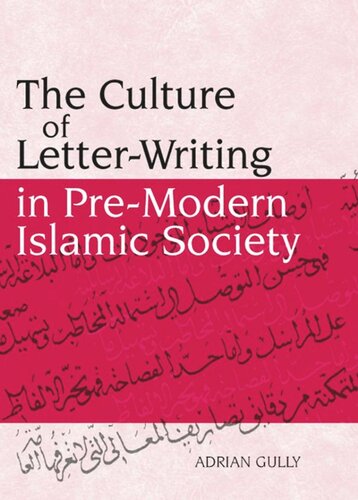

Most ebook files are in PDF format, so you can easily read them using various software such as Foxit Reader or directly on the Google Chrome browser.
Some ebook files are released by publishers in other formats such as .awz, .mobi, .epub, .fb2, etc. You may need to install specific software to read these formats on mobile/PC, such as Calibre.
Please read the tutorial at this link: https://ebookbell.com/faq
We offer FREE conversion to the popular formats you request; however, this may take some time. Therefore, right after payment, please email us, and we will try to provide the service as quickly as possible.
For some exceptional file formats or broken links (if any), please refrain from opening any disputes. Instead, email us first, and we will try to assist within a maximum of 6 hours.
EbookBell Team

0.0
0 reviewsThe Culture of Letter-Writing in Pre-Modern Islamic Society received an honourable mention from the British-Kuwait Friendship Society at BRISMES 2009
Writing letters was an important component of intellectual life in the Middle Islamic period, telling us much about the cultural history of pre-modern Islamic society. This book offers a unique analysis of letter-writing, focusing on the notion of the power of the pen. The author looks at the wider context of epistolography, relating it to the power structures of Islamic society in that period. He also attempts to identify some of the similarities and differences between Muslim modes of letter-writing and those of western cultures.
One of the strengths of this book is that it is based on a wide range of primary Arabic sources, thus reflecting the broader epistemological importance of letter-writing in Islamic society.
Key Features